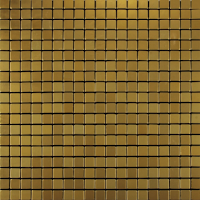That monastery was the most northerly one on the globe.
It was situated on the seventieth degree of latitude, not far from the mouth of the Petschenga River, and immediately to the east of the present boundary between Norwegian Lapland and Russia.
The
districts of Neiden, Pasvig and Petschenga (or Peisen) formed, as is well
known, a debateable territory, on which both Norwegians and Russians levied
taxes...
The church, which was built in honour of the Holy Trinity, was adorned with a tower and dome.
It was decorated inside with paintings and with the gifts of pious pilgrims.
It was constructed after the old Greek Church plan, which is followed throughout Russia, whether the church is large or small, or whether it is built of stone or merely of wood.
Such a church has three divisions, viz.: the narthex, or outer church; the hieron, the sacred part, or church proper; and the hieraton, the sanctuary, or holy place.
This division is said to be a representation of the Temple at Jerusalem.
The outer church is separated from the hieron by a wall, in which are two large folding doors; these are always open during Divine service.
The hieraton, or sanctuary, in which the altar is placed, is in turn separated from the church, or hieron, by the iconastasis, or wall of pictures.
This wall is decorated with carvings, and there are three doorways in it leading to the holy place.
The middle one of these doorways is only closed with a wooden door for half of its height, but the upper half is shut off by a curtain, which can be drawn aside so that the priest as he officiates and offers incense may be seen.
At other times he is hidden from the congregation.
Not a pew or seat is to be found in the church.
Everybody has to stand, rich and poor alike, for no distinction is made.
Turning to the holy place, or towards the picture of some particular saint, the people cross themselves three times in the Greek manner, by putting three fingers, the first finger, thumb and middle finger, on the right and left shoulders, the forehead and breast, and bowing themselves very low, with their foreheads touching the ground, at the same time saying, ‘Gospodi pomilui’ (Lord, have mercy).
This sentence is constantly repeated
throughout the service, and it frequently happens that the more devout members
of the congregation, by reason of their continual bowings to the ground, leave
the church with red spots on their foreheads.
All the walls inside the church are covered as completely as possible with pictures, which are either painted on the walls themselves, or are hung in frames against them.
The pictures in the narthex are taken, as a rule, from the Old Testament, and those in the hieron from the New Testament.
Besides these there are pictures of men and women who are recognised as saints in the Eastern Church.
The older these pictures are, the holier they are esteemed.
In copying them, therefore, the chief object is to give the copy an appearance of antiquity.
Many of the pictures have been painted by the monks themselves, and, as a rule, they are done in very glaring colours.
The heads of the saints are always surrounded by a golden glory, on the gilding of which much money is frequently expended.
They are also often hung with presents, such as handkerchiefs and other personal finery, which have been offered by pilgrims whose particular saint is represented.
Sometimes one sees a wreath of blown birds’ eggs hung up by the picture, a melancholy token of hopes blighted in this world.
The front wall in the church, through which access to the outer church is gained, is covered with a lean-to roof, and on this wall there is depicted, in order to excite the imagination and the fear of the heathen folk, on the right hand of the door the bliss of Paradise, and on the left hand the torments of Hell.
Here the heathen as they stood outside the church and listened to the singing, would have made manifest to them what would be the lot of those who did not seek the help which the Church offered them, and who refused to be baptized.
One thing, however, in the pictures was strange and suggestive, and might have made the heathen doubtful about the charms of Paradise, and this was, that the saints in Paradise were delineated as so fearfully emaciated that they seemed to be nothing but skin and bone, owing to the fasting and the asceticism by which they had made themselves worthy of heaven.
The other folk, moreover, who were in hell, seemed to be well-favoured, lusty, and thriving, and altogether more attractive.
In the middle of the
courtyard, between the monastery buildings, there was a draw-well, and upon a
beam placed over it there was the following inscription, which can be read
backwards,
Νίψον ἀνομήμα μὴ μόναν ὄψιν
(Wash away uncleanness, not from the face
alone)
a reminder that water is
used in the administration of Holy Baptism.
The inscription Νίψον
ἀνομήμα μὴ μόναν ὄψιν occurs on the fonts at Sandbach Church (Cheshire),
Rufford (Lancashire), and elsewhere in England.
The monks, who year by year
became more numerous, obtained by degrees still further privileges from the Czar
of Russia...
J. A. Friis, The monasteryof Petschenga, Sketches of Russian Lapland (from historical and legendary
sources), London: Elliot Stock, 1896.
Photo: pngwing


No comments:
Click Here To add Comment
Post a Comment
Blogger Widgets